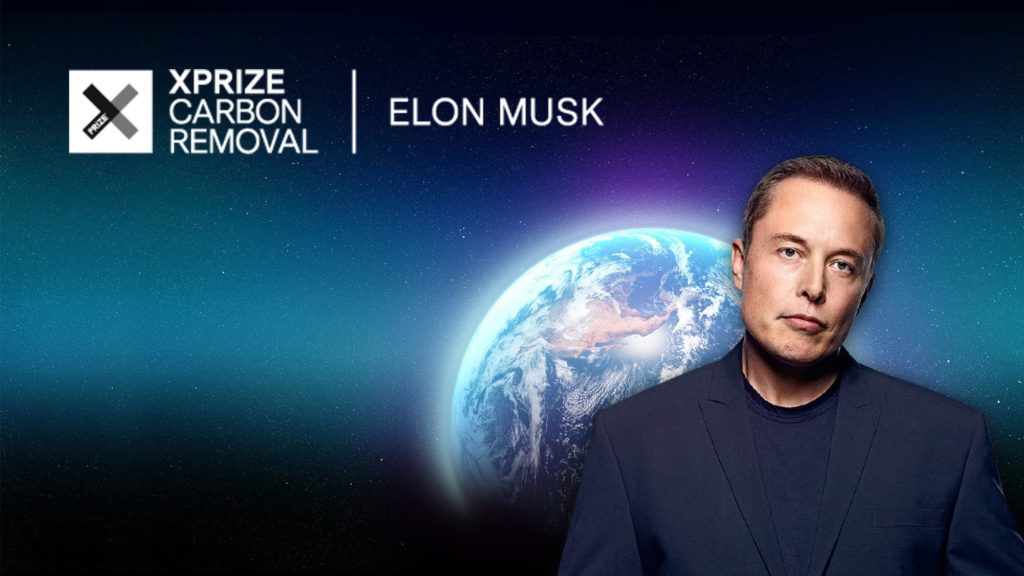XPrize Foundation to Award $100M for Climate Change Solutions
Earth Day 2021 will herald the beginning of the most ambitious XPrize yet, and this time, the target is climate change. The XPrize Foundation was founded in 1994 with the mission to explore new frontiers, unleash human potential, and secure a healthy planet. This year’s contest is no exception. Elon Musk and the Musk Foundation have offered $100M, the largest incentive in XPrize history, for the teams demonstrating the most effective carbon dioxide removal (CDR) strategies. The $100M will be split across multiple prizes: three top prizes of $50M, $20M, and $10M, followed by 15 prizes of $1M each, as well as 25 scholarships for $200,000.
Carbon dioxide is a potent greenhouse gas and major contributor to climate change. Current atmospheric levels of carbon dioxide are the highest they’ve been in 3 million years. High levels of carbon dioxide aren’t just a problem for the atmosphere. The oceans are a major carbon sink, absorbing carbon dioxide from the air, leading to harmful ocean acidification.
In order to avoid the worst effects of climate change, it’s not enough to reach carbon neutrality, where the amount of carbon dioxide emitted into the atmosphere is offset by the carbon removed from the atmosphere through natural or manmade processes. We need to remove far more than we’re emitting. We need to remove 6 gigatons of carbon dioxide from the atmosphere per year by 2030 and 10 gigatons by 2050.
The XPrize aims to spur innovation in CDR over the next four years. Teams are encouraged to find solutions that pull carbon dioxide directly from the air or water and store it in a way that’s both permanent and environmentally benign. One of the more difficult aspects of the challenge will be scalability. XPrize winners must have CDR solutions that can be scaled up to the gigaton level. Entries will be evaluated based on the amount of carbon dioxide removal, a complete assessment of environmental impact, energy efficiency, land footprints, and carbon storage capabilities.
The XPrize eligibility criteria state, “Any carbon negative solution is eligible: nature-based, direct air capture, oceans, mineralization, or anything else that sequesters CO2 permanently.”
The XPrize eligibility criteria state, “Any carbon negative solution is eligible: nature-based, direct air capture, oceans, mineralization, or anything else that sequesters CO2 permanently.”
One eligible carbon negative solution is mineralization through enhanced rock weathering. Mineralization through enhanced weathering removes carbon dioxide from the air and safely stores it in plant material, in the soil microbiome, and in precipitates such as bicarbonate. Enhanced weathering uses finely ground rock dust which allows for a high level of reactivity.
A 2018 study published in Environmental Research Letters estimated that enhanced weathering of volcanic rocks alone could remove 1.9 gigatons of carbon dioxide per year globally. Enhanced weathering also adds nutrients to the soil which can increase productivity on agricultural and forest lands. Sustainable farming practices can further utilize the increase in productivity to store even more carbon in the soil. The global CDR potential on croplands could be anywhere from 4.9 to 95 gigatons per year. Even the low end of this range suggests enhanced weathering has the potential to significantly reduce atmospheric carbon dioxide. The process is already cost competitive with current technology at $60 to $200 per ton of carbon dioxide.
Projects to study CDR through enhanced weathering were already underway before the announcement of this year’s XPrize contest. The Future Forest Company in Scotland uses rock dust and biochar to capture carbon dioxide from the atmosphere through forestry. A research team from the University of Sheffield in the UK is studying the ability of rock dust to improve crop yields and remove carbon dioxide from the atmosphere. In one of their completed studies, they estimated that the application of rock dust on one hectare of land could remove two to four tons of carbon dioxide.
Enhanced weathering is a viable, cost-competitive CDR strategy and potentially a very strong contender for the XPrize using readily available technology. It’s unknown whether any of the teams competing for the prize will decide to pursue this strategy. One thing is clear, though. Removing 10 gigatons of carbon dioxide from the atmosphere is no small feat, but even beyond the $100M in prizes, the rewards are immense. If we want a stable climate and a cleaner future, it will likely require multiple approaches at once. Hopefully, soil remineralization and enhanced weathering will be one of them. Remineralize the Earth is looking to form a team to pursue the XPrize.
Debbie Patskowski is a senior petrophysicist and freelance writer on Medium, covering such topics as geology, science, and space exploration. Her professional areas of expertise include identification of minerals, rock types, and pore fluids using remote sensing (borehole) measurements. She has a BS in Geology and Environmental Sciences from Stanford and an MBA from the German University in Cairo. She and her husband live in Colorado where she enjoys running and hiking in the Rocky Mountains.
Support us on Patreon
Thank you for joining us today! Please become a member of RTE and support us on Patreon. Unlike many larger organizations, we work with a team of determined and passionate volunteers to get our message out. We aim to continue to increase the awareness of remineralization to initiate projects across the globe that remineralize soils, grow nutrient dense food, regenerate our forests’ and stabilize the climate – with your help! If you can, please support us on a monthly basis from just $2, rest assured that you are making a big impact every single month in support of our mission. Thank you!








Got something to say?